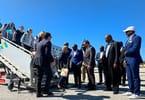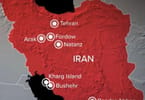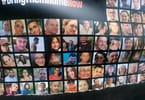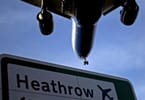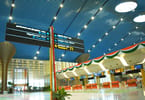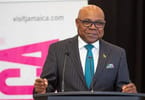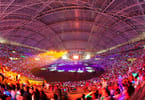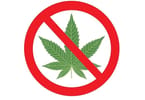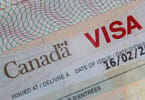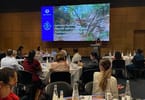The Japanese city of Sendai proved last month when it successfully hosted the first three-days of the 12th edition of the World Travel & Tourism Council’s Global Tourism Summit that not only is it open for business, it proved that it can accommodate high profile meetings and conferences.
A day before Day One of WTTC’s Sendai summit, attendees got to see both beauty and madness during their day tour of Sendai. A tour of historical temples Hiraizumi and Motsuji took most of the morning’s sightseeing program and their afternoon was spent in areas affected by the March 11, 2011 Tsunami. On their drive to the final stop of the day tour, which was a park in Wakabayashi Ward, they saw visible remnants of last year’s tsunami–damaged houses and rubbles. At the park in Wakabayashi Ward, summit attendees were introduced to a man who told his harrowing ordeal of seeking refuge from the tsunami with his kids at the park’s higher grounds before they were eventually rescued.
On Day One of WTTC’s Sendai summit, delegates heard from Mr. Norifumi Idee, who is the commissioner of the Japan Tourism Agency (JTA) in the Ministry of Land, Infrastructure, Transport and Tourism. Mr. Idee began his summit speech by showing a map of the Tohoku region. The map identified Akita, Aomori, Iwate, Yamangata, Fukushima and Miyagi as the six prefectures that make up the Tohoku region. The map also showed Sendai as a city that is located in the Miyagi prefecture. Miyagi, Iwate and Fukushima prefectures were marked on the map as “areas affected by tsunami” and within that affected area is a “cautionary area,” marked on the map by a yellow highlighter.
Mr. Idee expressed his disappointment towards the media for its coverage of the crisis. “Reports from mass media focused on affected areas, so that information on unaffected areas in Japan was not conveyed correctly,” he said. He admitted that “promotional events for overseas media and travel agencies to restore inbound tourism from the reduction caused by harmful rumors.”
During his speech, Mr. Idee dispelled some misconceptions about specific issues. On radiation, he said, “The levels of airborne radiation are well within safe levels, and in fact lower than most cities.” And by “most cities,” he meant New York, Paris, Berlin, Singapore, Beijing and Seoul (point browser to https://plus.google.com/photos/114241210187367271278/albums/5741446867359764689/5741446870652571234 to view picture).
On food safety, he said: “Established provisional regulation values for radioactive substances contained in foods and took measures, including restriction on the shipment of foods that exceeded applicable regulation values. More strict standards on April 1, 2012 to secure higher food safety from a long-term viewpoint.”
On infrastructure, he pointed out that the Tohoku Express Way is the “transport and commercial artery connecting Tohoku and Kanto regions” and that “347 km out of 675 km of the expressway was damaged in the earthquake on 11th March, but traffic restriction was lifted as early as on March 24th, following the completion of emergency restoration measures.”
He also mentioned that Sendai Airport was badly damaged, but he was thankful to the cooperation between the US Armed Forces and Japanese Self-Defense Forces for restoring the entire runway 28 days after the tsunami.
From a tourism perspective, the JTA commissioner had a clear message: “Tohoku is safe for travel. Most sightseeing areas in Tohoku did not suffer direct damage from the earthquake or tsunami except for coast areas along the Pacific Ocean. All hotels, hot springs and restaurants are operating normally.”
So, how much of an impact did the March 2011 crisis have on Japan’s travel and tourism industry? According to Mr. Idee, the total number of foreign travelers to Japan was 27.8% less in 2011 than in the previous year. During the crisis, domestic tourism was “restored to the normal level by summer” and “the number of inbound travelers: quickly returning to the normal level” based “on the ratio over the previous year -11.7% in December.”
In March this year, WTTC released “The Tohoku Pacific Earthquake and Tsunami Report.” Offering a positive forecast, WTTC in its report stated: “After the initial large falls, international demand also began to rebound in 2011, evolving in line with our initial low impact scenario. Full recovery in international tourism demand should be evident in the first half of 2012.”
WHAT TO TAKE AWAY FROM THIS ARTICLE:
- On infrastructure, he pointed out that the Tohoku Express Way is the “transport and commercial artery connecting Tohoku and Kanto regions” and that “347 km out of 675 km of the expressway was damaged in the earthquake on 11th March, but traffic restriction was lifted as early as on March 24th, following the completion of emergency restoration measures.
- Miyagi, Iwate and Fukushima prefectures were marked on the map as “areas affected by tsunami” and within that affected area is a “cautionary area,” marked on the map by a yellow highlighter.
- He also mentioned that Sendai Airport was badly damaged, but he was thankful to the cooperation between the US Armed Forces and Japanese Self-Defense Forces for restoring the entire runway 28 days after the tsunami.




